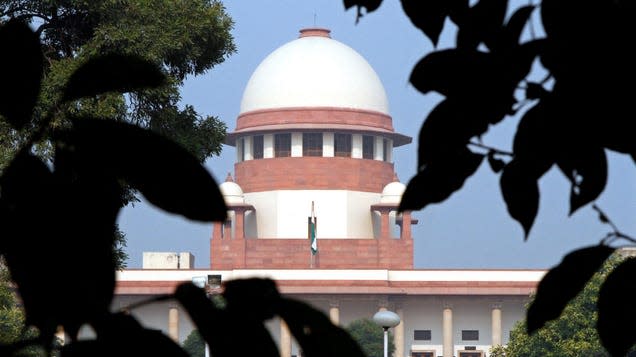India's supreme court beat SCOTUS to reviewing affirmative action

Even as the US supreme court hears arguments on affirmative action in universities, India’s top court today (Nov. 7) upheld a 10% quota in government jobs and educational institutions for people from economically weak backgrounds.
The quota was first announced by the Bharatiya Janata Party (BJP) government in January 2019, months before general elections in India. Since then, over 40 petitions have been filed in the court, challenging its constitutional validity.
Read more
A five-judge panel said the verdict does not violate the basic structure of the equality code in the Indian Constitution.
“It is an instrument not only for inclusion of socially and educationally backward classes to the mainstream of society, but also for the inclusion of any class or section so disadvantaged as to be answering the definition of a weaker section,” Justice Jitendra Kumar Maheshwari said in his judgment.
According to the verdict, the quota will apply on the basis of people’s land holdings, monthly income, or size of their homes. However, the quota specifically excludes people from scheduled tribes, castes and other backward classes—the historically disadvantaged sections of Indian society for whom reservations had initially come into existence.
“The Hindu right-wing organizations have been always openly advocating against caste-based reservations,” Ashok Swain, a professor in the department of peace and conflict research at Uppsala University told Quartz. “The BJP had taken this initiative after losing several state elections, and it is primarily to keep the upper-caste vote bank happy,”
India’s caste-based reservation will be being undermined
Constitutionally, India’s affirmative action program was launched in 1950 and is the oldest such programme in the world. Historically, quotas were meant only for tribespeople, backward caste groups, and Dalits, the community formerly deemed “untouchable” in the Hindu caste system.
But the court’s verdict now opens reservations up to upper-caste communities for the first time. As a result, this new quota, critics worry, will prove detrimental for India’s most disadvantaged sections when it comes to education and jobs.
“This verdict, although [it] looks harmless and progressive, will have serious implications for caste-based reservations that exists in India,” Swain said. “It will expedite the process of the removal of caste-based reservation altogether,” he added, pointing out that this has been on the agenda of the Hindu right decades.
In September, the government argued to the supreme court that the quota would not affect the availability of university seats or jobs for general and reserved categories. To accommodate candidates under the new quota, the government claimed, more than 200,000 new seats will be added in higher educational institutions.
The government also approved 4,315 crore rupees ($526.9 million) to public universities and engineering colleges such as Indian Institute of Technology to build additional infrastructure. But media reports suggest that these institutions have received only a miniscule portion of the funds approved, or none of it at all.
The diminishment of opportunities for historically oppressed castes and communities that Swain worries will result from the new quota is, in a sense, a parallel of the fears that the US supreme court will weaken race-based affirmative action.
Who is eligible for the new quota for economically weaker sections?
Unlike reservation based on caste, the new quota relies on the financial health of candidates. To be eligible, candidates need to meet every one of the following criteria:
One should be a “general” candidate—that is, not covered by reservation quotas for specific castes, tribes, or other backward sections of society.
The family’s gross annual income should be less than 8 lakh rupees ($9,765) from all sources.
The family should not own more than five acres of agricultural land.
The family should not own a residence larger than 1,000 square feet in area.
The family should not own a residential plot of land larger than 100 square yards in any location governed by a municipality.
In areas not governed by municipalities, families should not own more than 200 square yards of residential land.
More from Quartz
Sign up for Quartz's Newsletter. For the latest news, Facebook, Twitter and Instagram.

